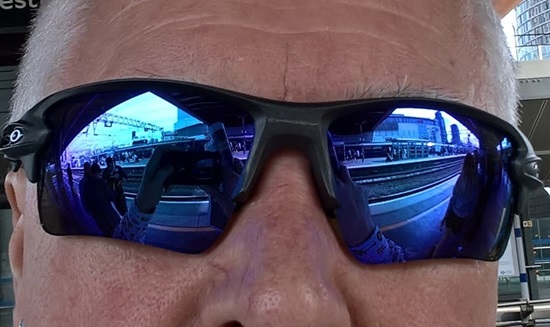
It’s three days in to the 2023 High Fives and we thought it was time to let Allan off the leash for his first contribution this year. Here are some of his reminiscences on gigs and artists old and new with a few photos as well. As you can tell from Allan’s introduction, every year has its losses as well as gains.
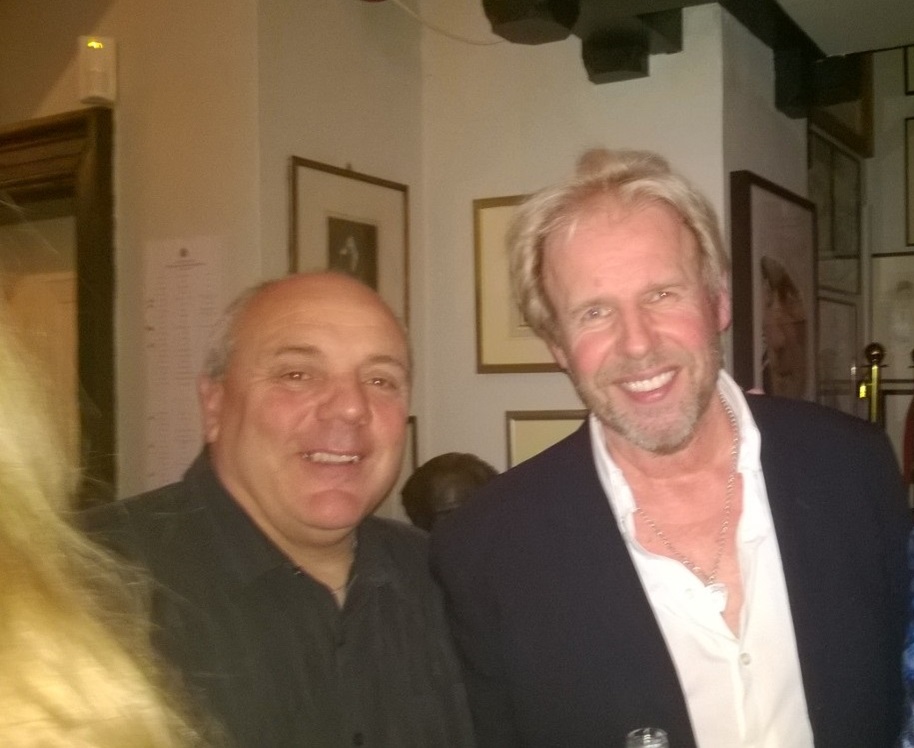
I’m rapidly approaching my fiftieth anniversary of gig-going and 2023 has been a year where the old and the new have frequently crossed paths as I’ve navigated the London gig scene. Before I get on to the positive stuff, there’s one loss we’ve suffered this year that really hurt. My love of live music kicked off when I was a student in Dundee between 1976 and 1980. One of the bands I saw there was the Scottish soul band Cado Belle. Maggie Reilly was an astonishing singer, but I was blown away by guitar player Alan Darby and his astonishing work on the tone poem ‘September’. The band split after one album and Alan did many things (including working on the door of a Covent Garden club managed by a friend of mine) before finally establishing himself as a guitar player and musical director with Lulu, Van Morrison and Les McKeown before going on to work in The Dominion production of ‘We Will Rock You’. A few years ago, courtesy of the wonderful Artie Zaitz, I wangled an invite for myself and my old mate (and Music Riot contributor) Steve Jenner to meet Alan at Chelsea Arts Club after a Guitars Deluxe performance. He was a lovely guy and he lost his battle with cancer earlier this year. Thankfully, we still have his music. Apologies for starting with a sad story, but those memories are as important as the happy ones, which are coming at you in chronological order.
Pin Drop Sessions @Caddy’s Southend (February 2023)
Have you ever been in Southend on a Friday night in February? It’s cold; it’s bloody cold, but I was going to see the brilliant Phil Burdett for the first time in 2023. It was a chance to see a new venue, have a beer or two with Phil and local bass maestro Martin Cutmore and grab a few pictures. So why is it called ‘Pin Drop Sessions’? It’s back to the old school; a small room, no PA and only acoustic instruments. No soundchecks, turn up and play to an audience that wants to hear music and doesn’t want to talk through the performances. You could literally hear a pin drop.

I’ve seen Phil Burdett performing many times over the last ten years as a singer-songwriter, author and poet and he’s always worth watching, never more so than in this intimate setting. It was perfect for Phil’s tales of Essex.
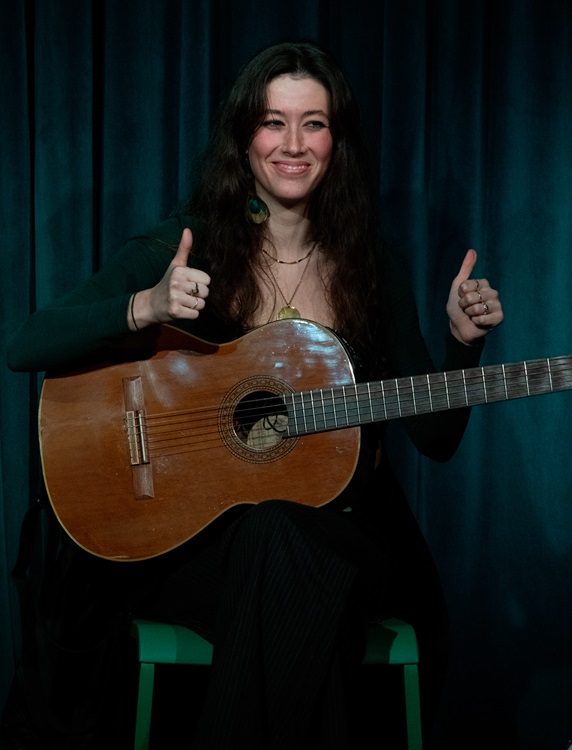
On this night, the new (for me) was Isabel Inkcap, who was totally engaging as she delivered her folk-inspired songs to a rapt audience. She’s a genuine talent who wins over the audience by sheer presence before she even starts to play either guitar or banjo. She also gifted me a great photo opportunity after a lengthy tuning session when it was obvious she was going to react somehow. I couldn’t have hoped for a better reaction.
Frankie Miller’s Full House @The 100 Club 30th May 2023
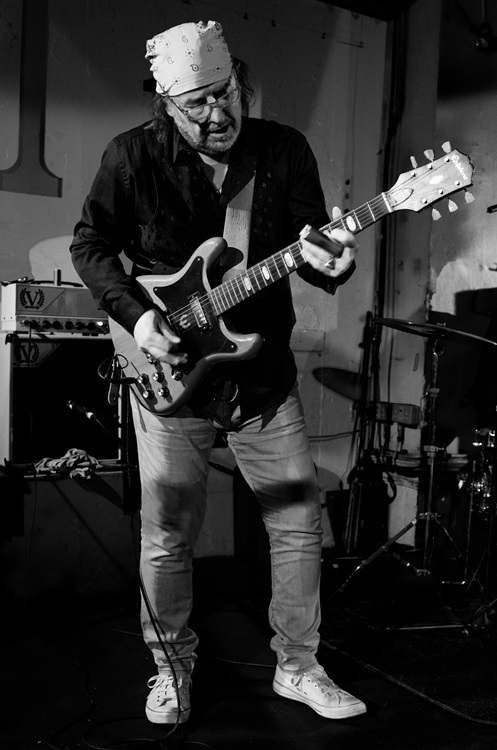
In more ways than one, this comes back to Steve Jenner again. The first band that we saw together at Dundee University was Frankie Miller’s Full House. The blend of rock and soul and Frankie’s incredible voice blew us away; live music was never the same after that. Frankie’s band included a guitar player I’d never seen before, who went on to become hugely respected in the music business as a player and a historian; his name’s Ray Minhinnett. Frankie worked with various musicians live and on record before a brain aneurysm in 1994 ended his musical career. He’s doing fairly well now after all the trauma and the beautiful thing is that his legacy is still intact and his fans still want to hear those songs, which is where Steve Jenner comes back into the picture.
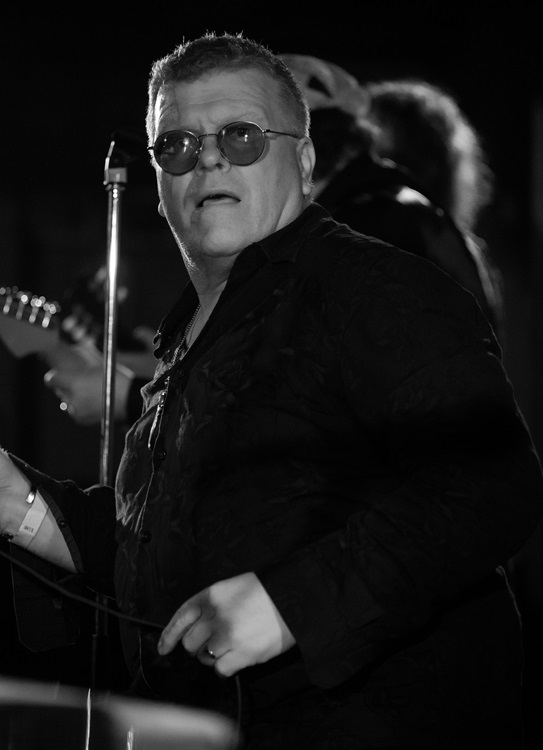
Early in 2023, Steve saw a reconstituted Full House (led by Ray Minhinnett and fronted by singer Gregor MacGregor). He pointed me in their direction and in May 2023 I got the chance to shoot Full House at The 100 Club. Frankie Miller was a one-off, but Gregor MacGregor has the Scottish voice to tackle Frankie’s songs with restraint and power in equal measure (and he’s a lovely bloke). A good night was had by everyone and the 1970s worked pretty well in the 2020s.
Southside Johnny @Shepherd’s Bush Empire 7th July 2023
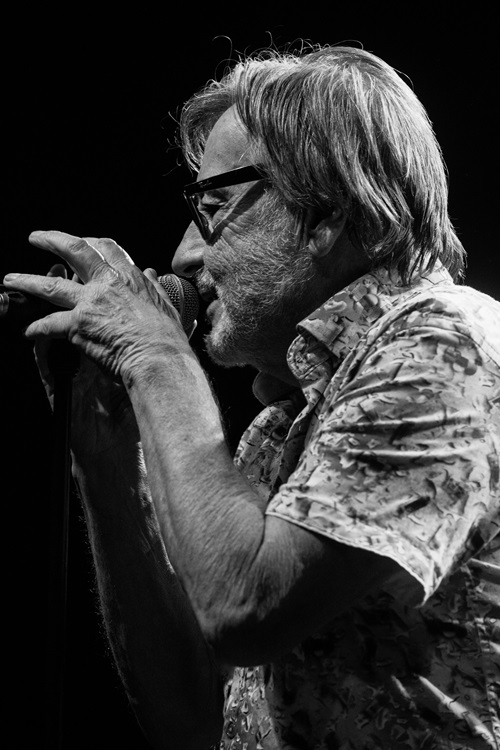
It was a “Will he, won’t he” gig. The talk in the pubs around Shepherd’s Bush Green on the day was about whether Bruce Springsteen might make a guest appearance between his two Hyde Park gigs on the 6th and the 8th. He didn’t, but my mate and guitar player extraordinaire, Jim Maving did bump into the E Street Band bass player Garry Tallent at the gig. Bruce or no Bruce, I never miss a Southside show because you never know when the next one will be. I’ve been a Southside fan for nearly fifty years and I’ve been lucky enough to meet and interview him a few times and photograph him loads of times. I got really lucky this time. In the past, I’ve missed a few great photo opportunities because of the house policy of checking in all pro gear backstage after the first three songs – that didn’t apply this time and I got to shoot from the auditorium for the rest of the set and caught some cracking shots.
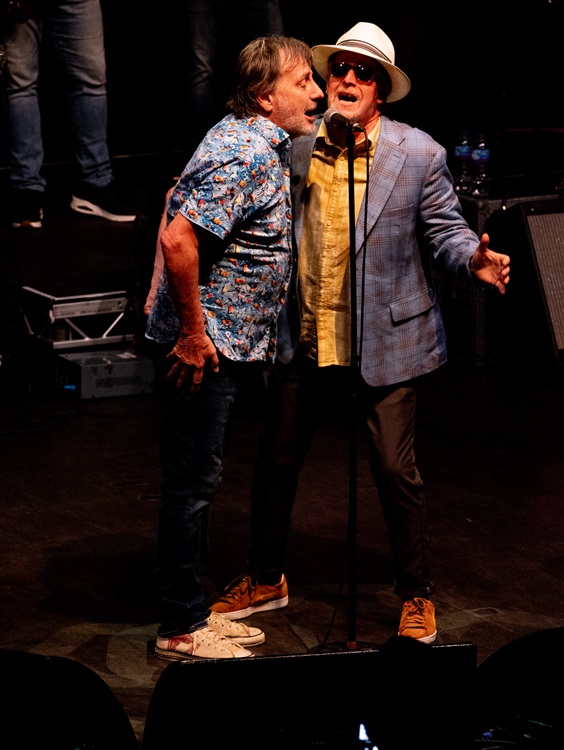
I’ve written about Southside Johnny and the Asbury Jukes before and I’m fairly certain I’ll write about them again. There’s a magic that happens when you take eight world-class musicians and give them the opportunity to express themselves within the framework of four-minute songs; you should all take the opportunity experience it.
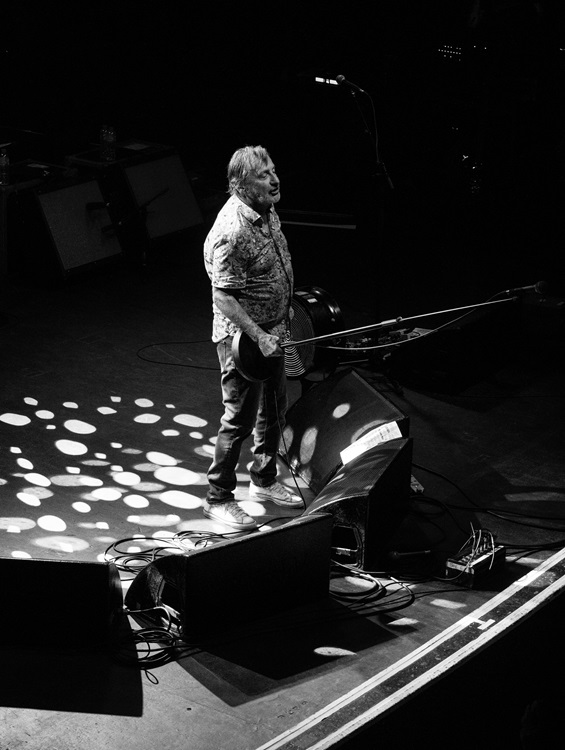
Folk in the Park Sutton 19th August 2023
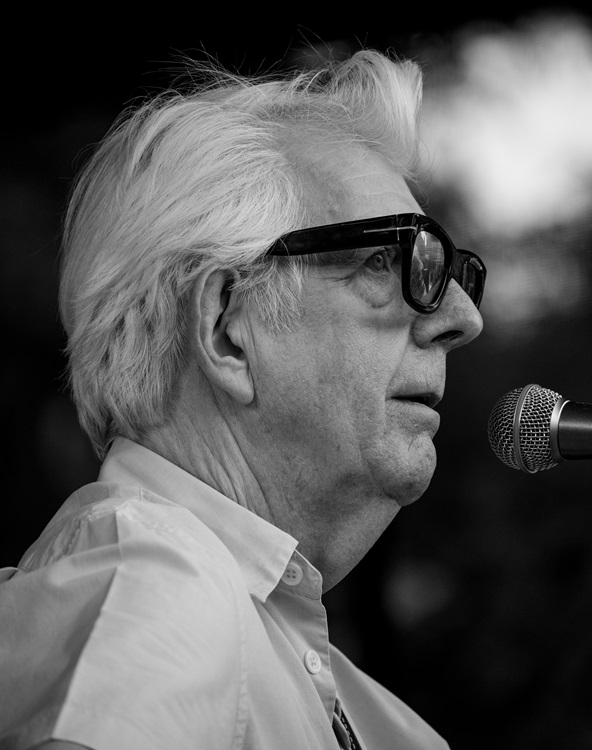
If you haven’t met Hannah White and Keiron Marshall, you really should. They’re both incredibly talented but they’re the nicest people you could ever wish to meet and they care passionately about music, about the environment and people in general. Hannah’s songwriting is always powerful and sometimes visceral (‘Car Crash’ is a great example) and Keiron shapes the arrangements and production for her songs bringing in all sorts of musicians, including Michelle Stodart to back Hannah live and in the studio.
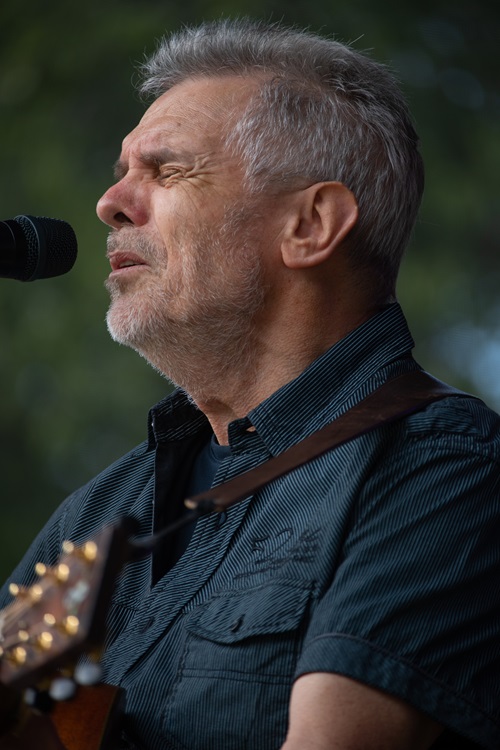
In 2022, they put together a festival in Manor Park, Sutton which was reasonably successful and decided to expand it in 2023 with more well-known and acclaimed and artists. I would have supported the event whoever was on the bill, but Hannah and Keiron excelled themselves, pulling in appearances from the legendary Nick Lowe (who I saw at my first gig when he played with Brinsley Schwarz) and Iain Matthews (whose album, ‘Stealing Home’, I bought in 1980 on blue vinyl and I’ve loved ever since). And they had Del Amitri topping the bill. Oh, and Hannah made an appearance with her band as well.
I’ve followed Hannah’s career for a few years now and it’s been a revelation to see genuine talent being recognised critically and commercially. Bring on 2024.
Stone Foundation 25th Anniversary tour
You’ve already read me rattling on about working with one of my teenage musical heroes; I think Neil Sheasby of Stone Foundation trumps me on this one. Neil was a fan of The Jam from their earliest days and, as Stone Foundation gathered momentum through the 21st century, they picked up a celebrity fan, Paul Weller, who went on to collaborate with them, produce their albums at Black Barn Studios and guest on a few of their gigs.
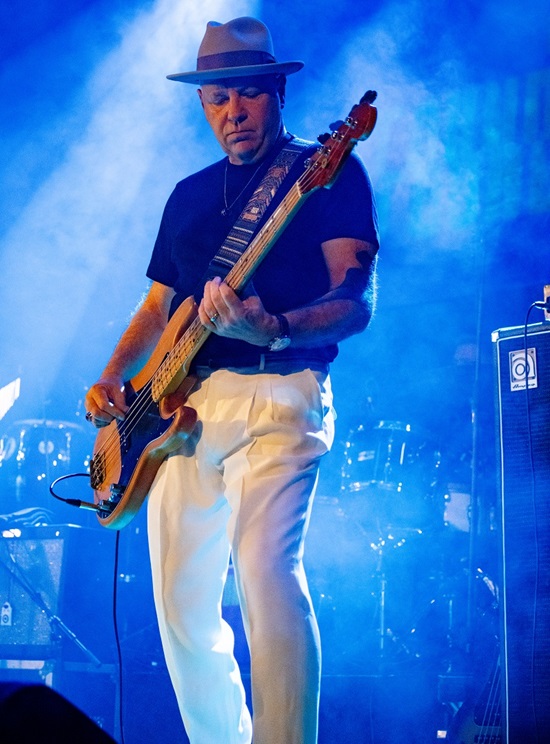
Forgive me for listing the band members, but Stone Foundation is a team effort and the core of the band has been together now for twenty-five years. Here we go: Neil Jones (vocals/guitar), Neil Sheasby (bass), Phil Ford (drums), Ian Arnold (keys), Rob Newton (percussion), Steve Trigg (trumpet and fluegelhorn), Dave Boraston (trumpet and fluegelhorn) and Anthony Gaylard (saxophone). They’re an incredibly tight soul unit and Neil Jones once told me that having the horn section on stage was like wearing a suit of armour.
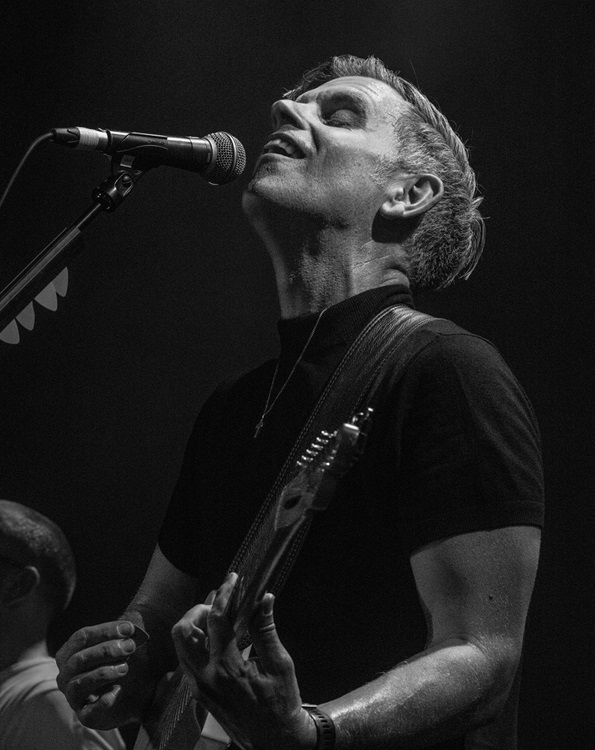
I’ve been a fan for over ten years and this year they celebrated their 25th anniversary with a UK tour that wound up with two nights at Islington Assembly Hall. They were supported by the wonderful Emily Capell (check out her album ‘Combat Frock’), DJ Robert Elms and had guest appearances from Mick Talbot, Graham Parker, Laville and Paul Weller over the two nights. If you want a validation of their work, I think that does it.
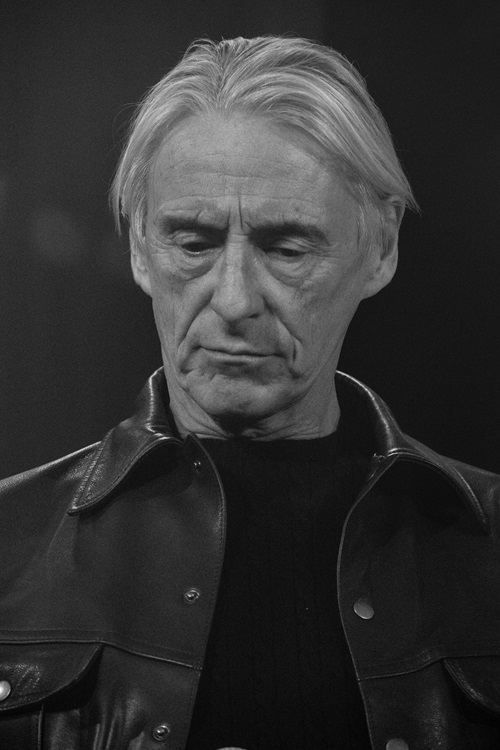
After almost fifty years of watching live music, it’s fabulous to pick out five gigs that really got the juices flowing. Just keep it coming, everyone.
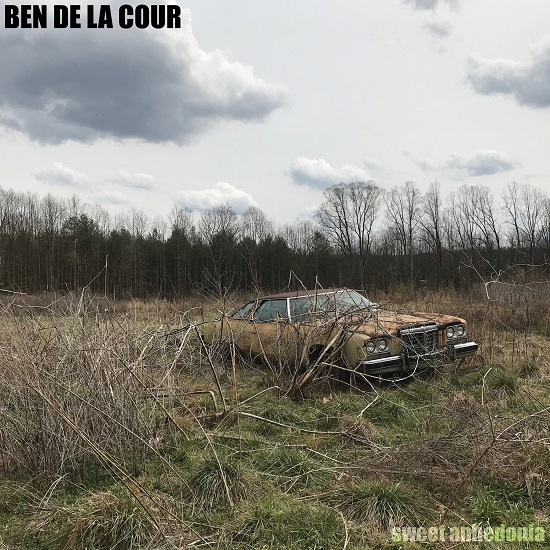
Usually the most difficult thing about reviewing music is working out where to start. Ben de la Cour solves that problem by giving the title song of his new album an enigmatic and intriguing title of ‘Sweet Anhedonia’. I had to look it up, and, logically enough, it comes from the same Ancient Greek root as hedonism and it means the inability to feel pleasure; it’s usually associated with illnesses such as depression. Maybe it’s just a coincidence, but there may be a reference to the 1996 Catatonia single, ‘Sweet Catatonia’. The title song, ‘Sweet Anhedonia’, is a melancholy exploration of this condition with a haunting triple time arrangement enhanced by delicate backing vocals and pedal steel.
There’s a lot more to Ben de la Cour than melancholy. There’s some wordplay in the song titles ‘Appalachian Book of the Dead’ and ‘Suicide of Town’, there are a couple of co-writes with very interesting songwriters, some great stories and some interesting arrangements. One of the co-writes, ‘Numbers Game’, was written with the gifted Canadian singer-songwriter Lynne Hanson and deals with the loading of life’s dice in favour of the privileged, set against a backdrop of finger-picked acoustic guitars, fiddle, pedal steel and Laurel Canyon harmonies.
Don’t run away with the idea that ‘Sweet Anhedonia’ is just a bunch of sad songs. The riff-driven ‘Suicide of Town’ is pure FM drivetime with a vocal that hints at Tom Petty and Rob Thomas and guitars playing off against each other, while ‘Shine on the Highway’ combines two electric guitars with fiddle and trumpet to create a song that would feel at home on a Greg Dulli solo album. And talking of influences, ‘American Mind’ hints at Jackson Browne’s apocalyptic feel from ‘Before the Deluge’, with the addition of Vietnam references and martial drumbeat (which is also a common theme throughout the album) for emphasis.
‘Palookaville’ features a series of characters that would fit in perfectly on any of the first three Springsteen album and uses Buddy Holly as an example of an artist whose legacy is untainted because he wasn’t around long enough to go downhill and either hit the skids or end up playing residencies in Vegas.
‘Sweet Anhedonia’ is a lyrically thought-provoking set of songs set against diverse musical backgrounds and textures, incorporating influences from Americana, folk, rock, pop and a whole lot more, skilfully blended to create a work that is entirely Ben de la Cour.
‘Sweet Anhedonia’ is released in the UK on Jullian Records (JR32CD/LP) on Friday October 13th.
Here’s the video for ‘Shine on the Highway’:
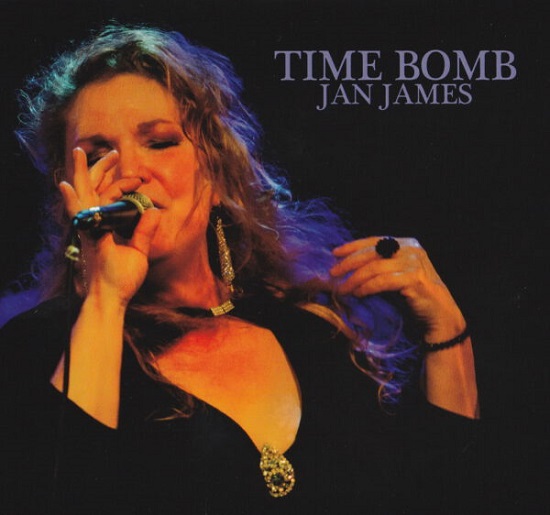
There’s a sweet spot where blues, rock and soul intersect with big guitar riffs, keys and horns. Chicago found it in the seventies, Southside Johnny has made it his lifetime’s work and Springsteen hit it perfectly with his soul covers album ‘Only the Strong Survive’. ‘Time Bomb’ is right in the centre of that sweet spot. Jan James has, as they say, paid her dues on the local Chicago scene in clubs, festivals and theatres, picking up a lot of respect along the way.
The influences she’s been exposed to shine through on ‘Time Bomb’, from the opening jazzy lilt of ‘Swingin’ in the Sweet Sunshine’ to the pure blues of the appropriately-named closing song ‘Always the Blues’. There are songs in traditional blues stylings; ‘Too Late Now’ is a slow blues given a country tinge with the piano part ‘Let Love Surround You’ is a slow blues, opening with a clipped guitar part that gives way to an over-driven guitar in the chorus. What’s noticeable on the album is that although Jan James has a powerhouse voice, it’s kept under a tight rein most of the time and doesn’t very often get into Janis Joplin territory.
‘Don’t It Feel Good’ has a midtempo soul feel while the anti-materialistic ‘Diamonds and Gold’ and the femme fatale song ‘Time Bomb’ both hint at eighties productions. The songs that jump out as being a little different are the two that address social and political issues. In Jan’s words, “All of the songs from ‘Time Bomb’ are inspired by the times we are living in.” ‘Desperate Times’ is a slow piece with some subtle keys that laments the state of the world but acknowledges that we all still need to carry on. ‘Blood on Your Hands’ has a much more direct message; it’s squarely aimed at Donald Trump for his part in the January 6th insurrection and it’s angry, very angry.
If you’re expecting an album of standard 12-bar blues tunes, ‘Time Bomb’ should be a pleasant surprise. You’ll find classic blues but you’ll also find elements of soul, country, swing, eighties FM rock and more besides. The arrangements are all classy and Jan’s vocal, which can go all the way to eleven on the raucous scale, is generally controlled throughout the album; powerful but controlled, and it’s refreshing to hear a few elements of the protest song in the mix as well. ‘Time Bomb’ is a collection of songs that work on a musical and lyrical level with some powerful and restrained musical performances. What’s not to like?
‘Time Bomb’ is released in the UK on Friday July 27th on Blue Palace Records (BPR 33318).
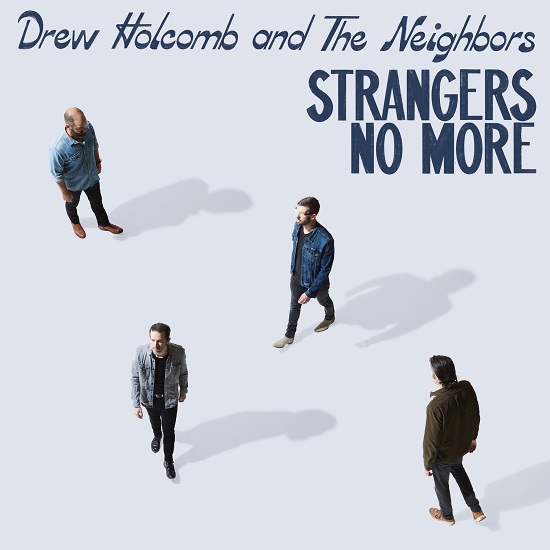
It’s just over three weeks since the World Health Organisation declared that COVID is no longer an emergency and a couple of years since it peaked, but the impact of the virus is still being felt, particularly in the fields of music and leisure. This Drew Holcomb and the Neighbors album was written on either side of the pandemic and pulled together in a way that couldn’t have happened during the emergency. Drew and his band spent eight days in a studio in Asheville NC, playing the songs live and searching for the perfect take. It’s a process with an element of risk but it works if you have good songs and good players; ‘Strangers No More’ has both of those in abundance. Lyrically, the album’s largely positive, emphasising the way forward rather than looking back, and reflecting Drew’s new outlook and more relaxed attitude to performance.
Drew Holcomb’s blessed with a versatile voice, equally at home on the tub-thumpers like ‘Dance with Everybody’ which hints at Springsteen, The Waterboys and Paul Simon’s African experiments, and the more reflective triple time ‘Gratitude’ with its soaring chorus and vocal that resembles Ian Matthews in the mid/late seventies. In fact, the seventies influence looms large throughout the album, sometimes where you least expect it. The album also showcases Drew’s vocal range and the band’s superb use of dynamics, shifting effortlessly from gentle acoustic arrangements to full-on widescreen E Street band arrangements; there’s plenty of variety, all held together by tight arrangements and the quality of Drew Holcomb’s voice.
And what about some of those other seventies references? ‘That’s On You, That’s On Me’ is a wake-up call song that opens with a nod to ‘Stuck in the Middle With You’ and moves on through rock guitar riffs with a country rock feel as the song progresses. ‘Possibility’ and ‘On a Roll’ both have an E Street Band feel while the latter also has a soundscape that seems to reference The Blue Nile. The big surprise is ‘Strange Feeling’, which opens with a ‘Darlington County’ style riff before, morphing into an early seventies Steely Dan sound complete with a guitar solo that could be the legendary Jeff Baxter.
Drew Holcomb and the neighbours succeed in pulling together a variety of styles and influences to create an album feels at the same time familiar and wholly original where everything is there to serve the song. This album will make you think, make you smile and make you want to dance like no-one’s watching – you can’t ask for more than that.
‘Strangers No More’ is released in the UK on Friday June 9th on Magnolia Music.
Here’s the video for ‘Dance with Everybody’:
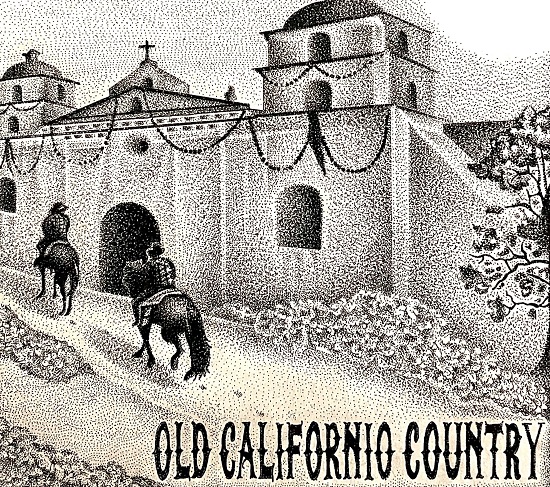
Here’s an interesting idea. Although the central figure in Old Californio is renowned songwriter Rich Dembowski, ‘Old Californio Country’ features ten covers and three band originals. There’s no reason why a songwriter shouldn’t do an entire album (almost) of covers; Bruce Springsteen’s just done it with his favourite old soul and rhythm and blues songs and the record-buying public is purring over that one. ‘Old Californio Country’ that’s packed with superb playing, beautiful lead vocals and harmonies and wonderful interpretations of songs by songwriters acknowledged as masters of their craft. It almost goes without saying that the playing isn’t showy, it’s just the playing that the song needs to make it shimmer.
Although the album’s heavily loaded with covers, the opener is a Rich Dembowski original played in classic country style and spiced with outlaw country sentiment – “shorten your give-a-shit list” is good advice for all of us. The covers range across a wide variety of country-related styles and interpretations, from Neil Young’s ‘Lotta Love’ that almost mimics Young’s ‘Comes a Time’ production but is turbocharged with perfect and powerful harmonies, to a rockabilly reworking of John Prine’s ‘Knockin’ On Your Screen Door’ that opens with a nod in the direction of Billy Joel’s ‘Still Rock and Roll to Me’. The Beatles’ ‘Because’ is transformed from a psychedelic piece to a banjo-led country song with soaring harmonies, while Lowell George’s ‘Willin’’ has all the edges and corners smoothed away to create a plaintive and beautiful ballad of life on the road made tolerable by “wed, whites and wine” punctuated by the reliably melancholy harmonica and lap steel fills – it’s the loneliness of the long-distance trucker.
How about favourites? Well two songs stand out for the quality of the song and the Old Californio interpretation. The Jason Isbell song ‘Maybe It’s Time’ (also covered recently by KB Bayley) is a classic example of powerful, evocative and economic songwriting highlighting indoctrination of the population underpinned by finger-picked acoustic guitars, lap steel fills and Nashville twang solo. The Guy Clark song ‘Stuff That Works’ is delivered in a minimal, laconic style with a resonator slide solo; it’s a hymn in praise of using the things that we actually need rather than the things we’re pressured to buy to keep up. Forget iPhone 14 and concentrate on that old shirt, pair of boots or guitar. On a personal note, I listen to my review albums on a fifteen-year-old MP3 player – if it ain’t broke…
‘Old Californio Country’ is out now.
Here’s a live version of ‘Willin’’:
OLD CALIFORNIO – WILLIN’ – Live at McCabe’s – YouTube
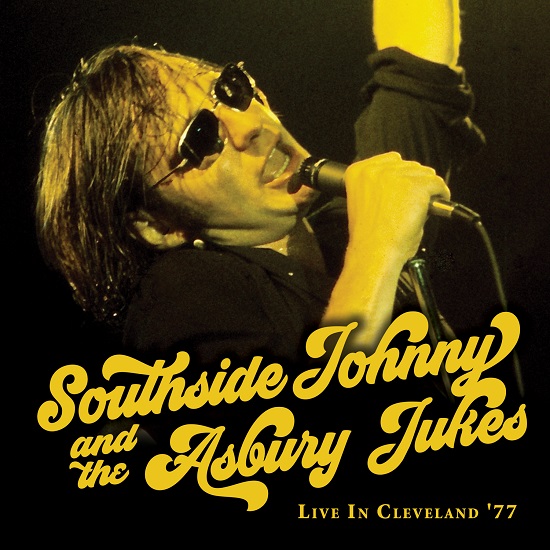
Here’s a strange coincidence for you. A couple of weeks ago I was talking to a couple of ex-members of Curse of Lono at a gig they were playing and we got to talking about the tour they did in support of Southside Johnny in 2019 and how much they were impressed by the band. Fast forward two weeks and I get press release telling me that the latest Southside Johnny and the Asbury Jukes album debuted at No. 5 in the Billboard Blues Chart. It may be the latest album, but ‘Southside Johnny and the Asbury Jukes Live in Cleveland ‘77’ was actually recorded forty-five years ago live at The Agora Ballroom and Theatre in Cleveland, Ohio, at a time when Cleveland was a major centre for rock music and The Jukes were on the up after two albums on Epic and a helpful Asbury Park association with Bruce Springsteen.
The album’s a fascinating snapshot of a band that was probably hitting its peak (and still has a loyal following to this day). The sound is big, with the full rock band augmented by a horn section packing a mighty punch and a singer with the voice to cut through the tight arrangements. It was a sound that you couldn’t ignore, combining elements of rock and soul and delivered with style and swagger. The opening song on the album, ‘This Time It’s for Real’ is a perfect example of the sound and the energy of The Jukes at that time. Have a listen:
The set on the night was a typical mixture of Jukes originals (mainly written by Steve van Zandt and Bruce Springsteen) and well-chosen covers including a version of Billy Joel’s ‘Goodbye to Hollywood’ featuring Ronnie Spector (who had featured on the Jukes’ first album ‘I Don’t Want to Go Home’). The album’s a great example of how a live album should sound and captures the energy and raw power of a big band at the top of their game. It’s a pity it took so long to unearth, but it’s a rare gem for Jukes fans and maybe it can bring a few more into the fold.
If you want to buy this classic live album, you can find the CD it on Cleveland International Records or Amazon and the vinyl will be available later in the year.
And meanwhile, The Jukes carry on the good work. There’s only Johnny left from the original line-up, but the current band has been together for about ten years and they’re still an awesome live experience. Here’s a shot of Johnny from a London gig at Kentish Town Forum almost exactly five years ago:
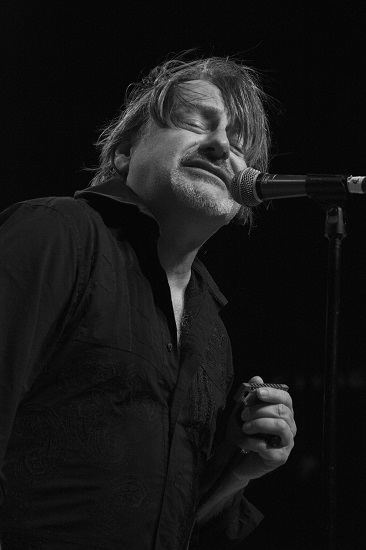
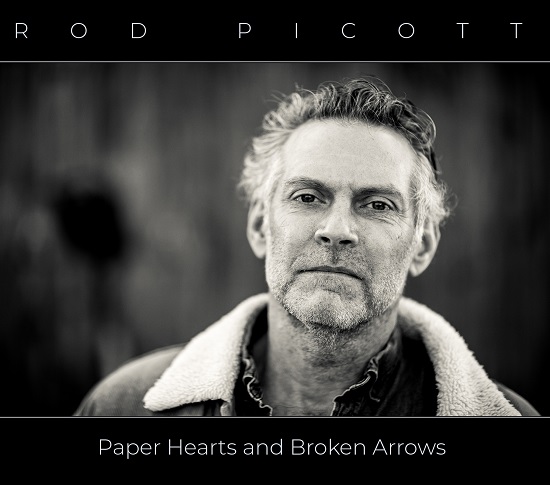
Every so often, an album comes along that isn’t just a great collection of songs played beautifully; an album that pushes a few personal buttons and maybe touches a few raw nerves as well. Rod Picott’s ‘Paper Hearts and Broken Arrows’ is one of those albums that creates a very personal connection. Maybe it’s an East Coast thing between Maine in the USA and Fife in Scotland; you don’t need to look too hard to see the parallels and ‘Washington County’ paints a picture of an area where genteel resorts sit side by side with poverty-stricken former industrial towns and villages. They’re three thousand miles apart, but it’s the same experience.
Just taking a step to one side for a moment, as music has moved into the digital realm, so have some of the ways of getting it out there and letting people know about it. It’s not so long since review copies arrived as CDs (or vinyl if you want go back a bit further) with an A4 press release, through the letterbox. Now they arrive in your inbox and an artist or PR team can include much more material with no extra distribution costs. Which means that artwork and credits, additional photos and lyric sheets are fairly common now and there’s a relatively recent addition of the artist’s ‘track-by-track’ notes. Reviewers should rely more on their ears and instincts than press releases, but you can sometimes pick up a useful insight into the artist’s vision. In the case of Rod Picott, there’s always something worth reading when he puts fingers to keyboard.
The story behind ‘Valentine’s Day’ on this album is a perfect example. It’s a very honest song, painfully so, that’s stripped back to the raw basics of acoustic guitar and cracked vocal. Rod’s notes tell us that the original recording was a full band version that sounded “wonderful – and completely wrong”, like “an Eagles track with a guy that can’t really sing”; the arrangement was too perfect and in Rod’s words again, “for me, perfect is almost always wrong”. Producer Neilson Hubbard liked the stripped-back version and three takes later it was in the can.
There are a couple of strands that run through the album, Rod’s acceptance of a spell of single life that surfaces in the opening song ‘Lover’, ‘Valentine’s Day’ and ‘Mona Lisa’ where the loneliness exists for creatives even inside a relationship, and the autobiographical songs ‘Lost in the South’ and ‘Mark of Your Father’ which both reference his background and his father with ‘Lost in the South’ using his father as a jumping-off point for Rod’s early experiences in the South, while ‘Mark of Your Father’ explores the complicated nature of father-son relationships using Marvin Gaye as an example of how bad things can really get.
And then there are a few songs taking their inspiration from other areas. The dark and menacing ‘Revenuer’, with its dirty guitars and screaming slide solo is inspired by a Taylor Brown novel and explores that thin line between right and wrong when your choices are limited and times are hard. ‘Frankie Lee’ is an outlaw song where the main character always accepts his ultimate fate as the electric chair and, like a lot of Rod’s more stark songs, wouldn’t sound out of place on The Boss’s ‘Nebraska’ (and I know I’ve made that link before).
Rod’s a fan of boxing and ‘Sonny Liston’ is a song that pulls at some of the threads running through a lot of Rod’s work. Sonny Liston was a complex character, torn between the world he came from and the dubious world of professional boxing and gangland connections that he joined without ever gaining the respect of either. The man who took his world title, Cassius Clay/Muhammad Ali is better remembered now, but the Sonny Liston story is full of loose ends, links to organised crime, drugs, sudden death and astonishing sporting prowess. Rod weaves all of these strands into a powerful and economic narrative with a simple alliterative and assonant chorus: “Two big fists pumping like pistons, nobody punched like Sonny Liston”.
Fourteen albums in, Rod Picott is still pushing at the boundaries of his craft, still looking for ways to create songs that mean something, to him and to his audience. Let’s not use the word ”perfect” to describe ‘Paper Heart and Broken Arrows”; let’s go with an outstanding collection of beautifully-crafted songs delivered by outstanding musicians and a singer whose voice cracks with power and emotion. OK with you?
‘Paper Hearts and Broken Arrows’ is released in the UK on Friday June 10on Welding Rod Records.
No videos yet for songs on the album, but here’s a link to a live performance of the fabulous ‘Rust Belt Fields’:
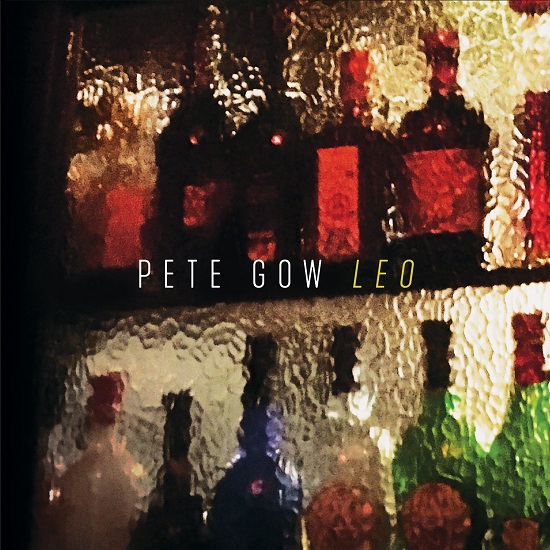
‘Leo’ is the third instalment in the ongoing collaboration between songwriter Pete Gow and multi-instrumentalist Joe Bennett. The previous two albums ‘Here There’s No Sirens’ and ‘The Fragile Line’ have a signature sound that features Joe’s string arrangements; on this album, he’s moved further back into the orchestra to add some horns to the mix, creating a wider palette and a much punchier sound to frame Pete’s (mostly) personal songs. The songs are given a widescreen treatment that nods in the direction of “Born to Run”-era Springsteen, but there are a few other comparisons that maybe aren’t so obvious.
In 1978, a Scottish songwriter living in London released an album featuring a few songs about working in the music business and the characters touching it at tangents that you meet in bars and clubs. ‘City to City’ was a classic Gerry Rafferty album, marrying classic songwriting with interesting arrangements and “Where Would We Be Going” is in the same mould, creating perfect settings for the emotional tug of Pete’s soulful vocals.
The album’s eight songs (‘Where Else Would Be Going?’ tops and tails the album in an upbeat and then a more reflective version) all reward repeated listens. There’s a lot to recommend and to write about every song, but I’ll concentrate on three that cover most of the bases.
‘Side III of London Calling’ is a seedy story of a musician trying to get wired and laid after the gig’s over, set against a mid-tempo groove that nods in the direction of The E Street Band. It’s authentic and gritty and compares the perfection of the woman being pursued to, guess what, ‘Side III of London Calling’. The lyrics keep your attention as wait to hear the outcome and the tune is an absolute earworm. There’s a hint of Elvis Costello/Sam & Dave with a falling down reference and a classic turnaround in the final chorus when the central character describes himself as “just about as welcome as Side V of Sandinista”. It’s great fun.
‘Leonard’s Bar’ is another beast entirely; it’s the centrepiece of the album, it clocks in at over seven minutes and it’s not autobiographical unless Pete has a secret career as an armed robber that he’s not telling us about. It’s difficult to resist the comparison with The Boss’s ‘Meeting Across the River’ as the story unwinds of the career petty criminal coaxed into one last job. The song weaves its way through tempo changes as it builds to the heist section before closing out with The Leo Horns.
‘The City is a Symphony’ is a Joe Bennett co-write that uses the full dynamic range offered by a rock band plus horns and strings as a setting for a lyric that intertwines the pathos of the present with a flashback to a time with a former lover. Joe’s arrangement blends all of the instrumental elements perfectly to create a symphony in miniature that blends seamlessly into the final song, the reflective version of ‘Where Else Would We Be Going?’.
‘Leo’ is a marvellous combination of the important elements of songwriting and production, pulling in ideas from all over the place, including musical references from The Clash to Clapton to create an album with earworms aplenty and a wide range of musical textures that emphasise the power of the lyrics. I’ve not reviewed a better album this year.
‘Leo’ is released on Friday April 22nd on Clubhouse Records.
Here’s the album’s opening single ‘Where Else Would We Be Going?’:
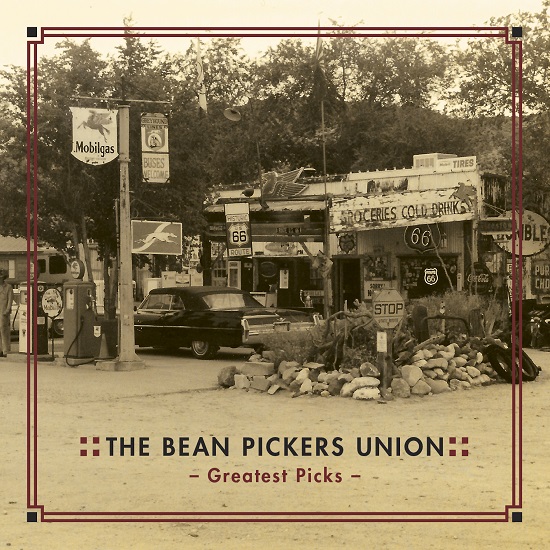
We’ve seen artists cope in many different ways with the pressures of the pandemic and lockdown; here’s another one. Chuck Melchin has already done the long-distance collaboration thing with Michael Spaly of Green Monroe as the Los Brujos project in 2019, so now he’s pulled together another project. It’s a Bean Pickers Union retrospective, pulling songs from the albums “Potlatch” (2007), “Better the Devil” (2012), “Caterwaul” (2017) and “Archaeology” (2019), As an added bonus, there are four unreleased bonus tracks. With a total of eighteen songs, it’s into double-album territory; fortunately there’s so much great material to choose from over the fourteen-year period that the album has a very cohesive feel that retrospectives often lack.
Describe the album in one word? Varied; there’s a long list of players and an even longer list of instruments used. The arrangements and stylings cover most of the Americana spectrum and a bit more besides; “Independence Day” is a full-on rock band arrangement with over-driven guitars and keyboards, hinting at Bruce and the E Street Band musically and even lyrically with a story of cars, girls, beer and marriage in a small American town. Chuck Melchin is a songwriter who knows how to tell a story in a 3-minute song and has a sure touch with his subjects, picking out uncommon themes that are still relatively easy to relate to.
A perfect example is “Philemon”, the story of a survivalist left stranded in the wilderness when Armageddon didn’t actually come. The minimalist backing sets the tone beautifully for the quiet desperation of a man left with only his bible, his ammunition and his shattered illusions. The menacing “Reaper”, starting with sampled surface noise, is a murder ballad telling the story of two friends who take different paths with tragic consequences and ends with violent death. “Warrior” is, on the surface, the tale of a Confederate soldier returning after the Civil War. The martial drums set the tone for the piece, while the intro hints at Al Wilson’s soul classic, “The Snake”. It’s a familiar tale, and a very angry one, of the wounded warrior spurned by society that still happens today with veterans from Vietnam, the Gulf and Afghanistan.
These offbeat tales are mixed with personal material and acute observations, leaving a very rounded and satisfying impression. It’s eighteen well-crafted songs covering a wide range of styles and themes and that’s more than enough to keep any serious music fan happy.
“Greatest Picks” is out now.
Here’s the video for “Warrior”:
 When we’re inviting people to contribute to our occasional features, there are two questions we ask. Do they have experience of the subject? Can they write about it in an interesting way? Ray Jones, CEO of Talentbanq , formerly Business Development Director at Time Out qualifies on both counts. He is passionate about live music and he knows how to write. It’s also fair to say that he’s seen a few gigs as well. So here’s what he came up with when we asked him to write about a memorable gig (and we certainly will be inviting him back):
When we’re inviting people to contribute to our occasional features, there are two questions we ask. Do they have experience of the subject? Can they write about it in an interesting way? Ray Jones, CEO of Talentbanq , formerly Business Development Director at Time Out qualifies on both counts. He is passionate about live music and he knows how to write. It’s also fair to say that he’s seen a few gigs as well. So here’s what he came up with when we asked him to write about a memorable gig (and we certainly will be inviting him back):
“The Windshield Wipers Slapping Time” – it was pouring as we waited in line to board the ferry to the Isle of Wight.
“I’ll take the 4×4” said my mate Bilko – and thank God he did. We were about to experience mud that made Glastonbury look a picnic. Fortunately we were also about to experience one of the best festival lineups of all times. The American Trilogy with nightly headliners – Tom Petty, Pearl Jam and The Boss.
With the ferry queue moving slowly – my 16 year old son CJ – heading for his first festival with dad, jumped out of the car with Bilko to get hot coffees. “Forward” shouted the guy from P&O so I jumped into the front and drove onto the ferry – and sailed away – without them.
The first of many memories from that wonderfully soggy weekend. Cars were being towed INTO Car Parks – tents were afloat on a sea of mud and wellies were getting stuck in the quagmire. And yet in amongst the mud, the blood and the beer were the smiles of people soaking up GREAT music.
Tom Petty on Friday night was a masterclass. The discomfort of rainwater trickling down our backs ignored as we took in the genius on stage.
I can’t remember when we saw Black Stone Cherry but they ripped it up, while the steamy wood-chip floor of The Big Top marquee seemed to be fermenting.
We met up with more friends. I have known Damian since we walked to primary school together. He and his wife were in one of those pre-sited Yurts. That’s the equivalent of The Ritz at IOW – and we did not let them forget it.
We partied quite hard to Madness on Saturday and Noel Gallagher was a fine warm-up on Sunday for what happened next – and that’s really what I had to share.
I’ve seen The Boss at Wembley, Hyde Park, The Olympic Park, Paris on the 4th of July and most memorably in his home state of New Jersey, but when he and the East Street Band walked out on stage at IOW2012 something magic happened.
The next three hours are a blur of singing, hugging, drinking, dancing and total admiration for a man and his band that delivered way beyond 100%.
We were exhausted when Mr Springsteen announced with a broad smile “We have a fucking boat to catch”
I have no idea if he made it because he broke into a massive, firework-festooned finale of “Twist and Shout” that had about 100,000 people partying in a way I had not seen at a festival before.
As we walked back to our tent my son said “Hey dad, this weekend has been the best thing I’ve ever done”
You can’t buy memories in Harrods! But you can make them at great festivals.
Thanks to wonderful people like John Giddings at Solo and Sarah Handy at Hard Rock I have many more memories of good times spent on the Isle of Wight, but those stories will have to wait. Maybe Music Riot will invite me back.
And here’s a little bonus from The Boss:


